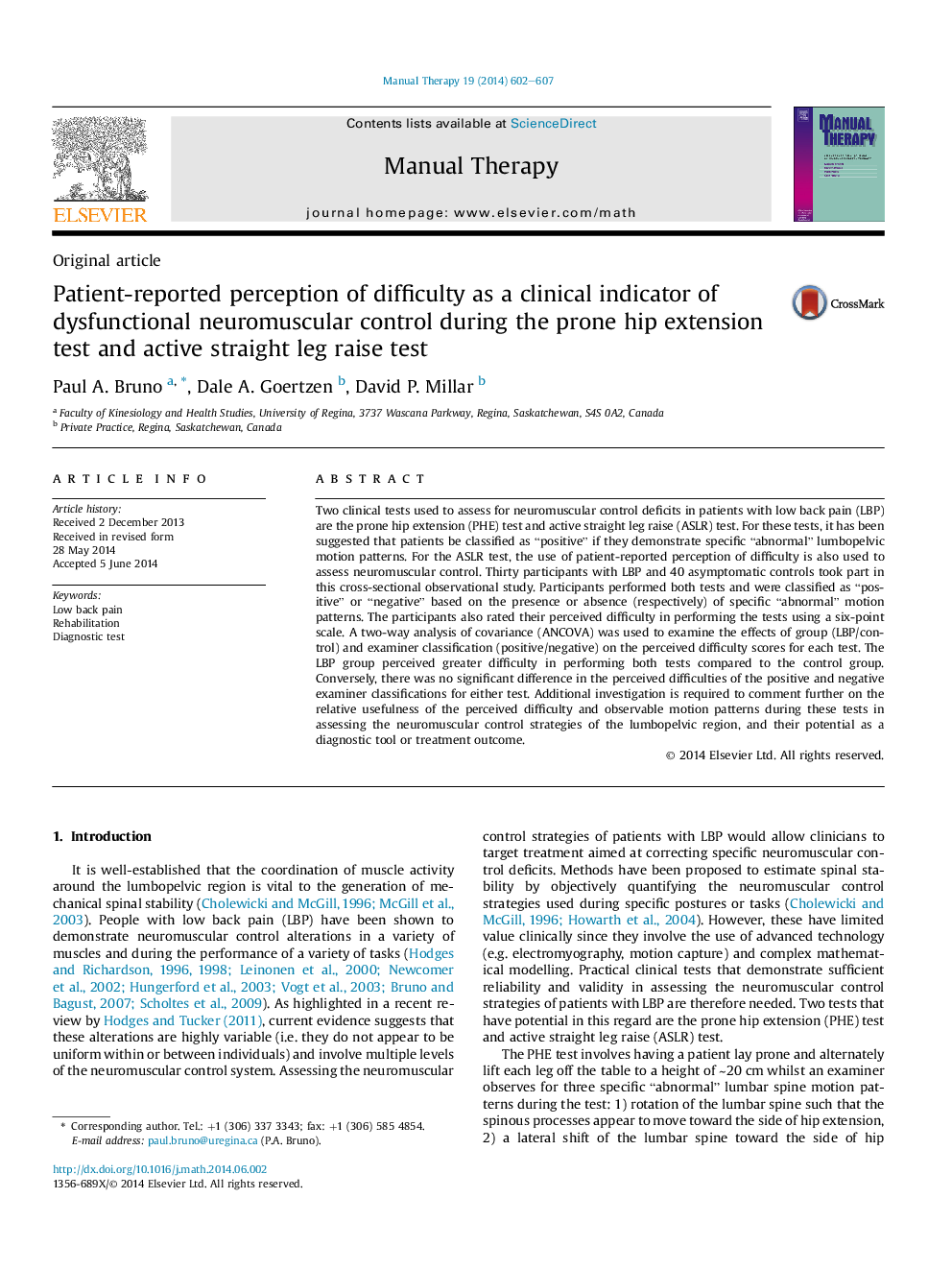| کد مقاله | کد نشریه | سال انتشار | مقاله انگلیسی | نسخه تمام متن |
|---|---|---|---|---|
| 5864672 | 1135924 | 2014 | 6 صفحه PDF | دانلود رایگان |
Two clinical tests used to assess for neuromuscular control deficits in patients with low back pain (LBP) are the prone hip extension (PHE) test and active straight leg raise (ASLR) test. For these tests, it has been suggested that patients be classified as “positive” if they demonstrate specific “abnormal” lumbopelvic motion patterns. For the ASLR test, the use of patient-reported perception of difficulty is also used to assess neuromuscular control. Thirty participants with LBP and 40 asymptomatic controls took part in this cross-sectional observational study. Participants performed both tests and were classified as “positive” or “negative” based on the presence or absence (respectively) of specific “abnormal” motion patterns. The participants also rated their perceived difficulty in performing the tests using a six-point scale. A two-way analysis of covariance (ANCOVA) was used to examine the effects of group (LBP/control) and examiner classification (positive/negative) on the perceived difficulty scores for each test. The LBP group perceived greater difficulty in performing both tests compared to the control group. Conversely, there was no significant difference in the perceived difficulties of the positive and negative examiner classifications for either test. Additional investigation is required to comment further on the relative usefulness of the perceived difficulty and observable motion patterns during these tests in assessing the neuromuscular control strategies of the lumbopelvic region, and their potential as a diagnostic tool or treatment outcome.
Journal: Manual Therapy - Volume 19, Issue 6, December 2014, Pages 602-607
